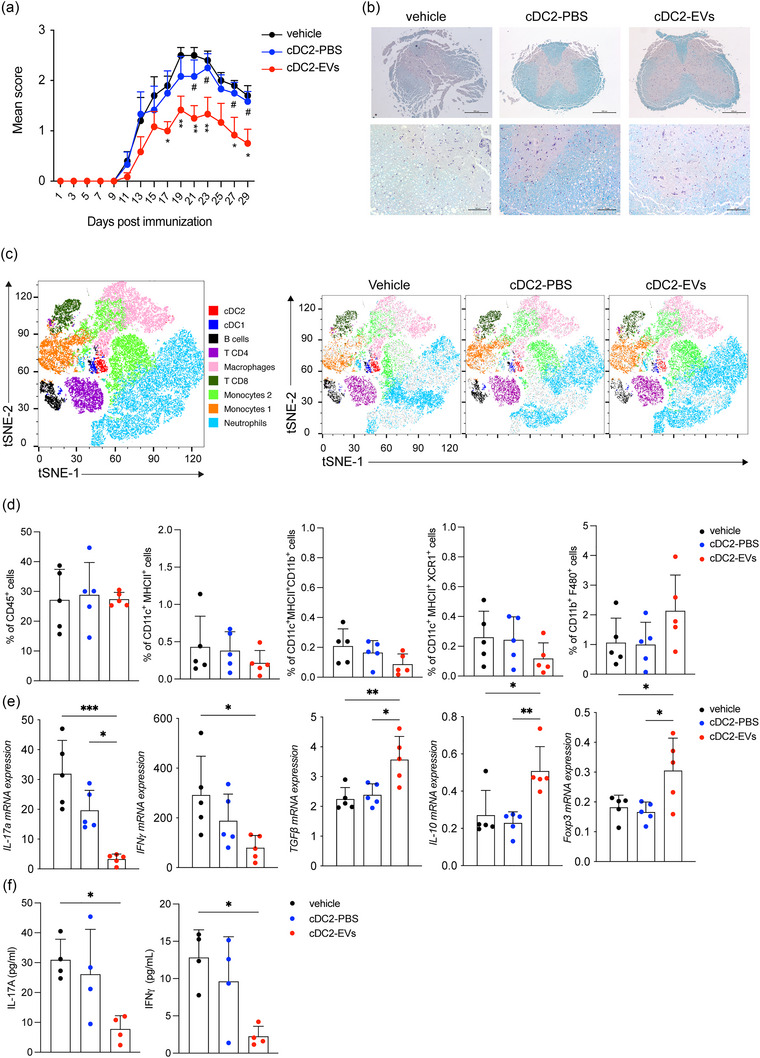FIGURE 6.

HAFSC‐EVs conditioned cDC2 induce immune‐regulatory functions in EAE. (a) EAE score in mice i.v injected with vehicle, cDC2 pretreated with vehicle (PBS) or HAFSC‐EVslow. Data are mean of daily EAE scores ± SD, n = 2, with n = 7 mice per group. *p < 0.05, **p < 0.01 (vehicle vs. cDC2‐EV), # p < 0.05 (cDC2‐PBS vs. cDC2‐EV) by two‐way ANOVA followed by Tukey recommended multiple comparison test. (b) Spinal cords were collected at sacrifice (30 days from immunization) from three mice per group, sectioned and stained with luxol fast blue for myelin. Scale Bar 500 and 100 μM. (c) tSNE plots of immune cells analysed in spinal cords of mice with EAE treated with vehicle, cDC2‐PBS and cDC2‐EVs showing nine clusters, coloured by density clustering and annotated by cell‐type identity. tSNE analysis was performed by FlowJo software. (d) Statistical analysis of immune infiltrate in spinal cords by flow cytometry. Data are reported as mean ± SD of the frequency of CD45+ immune cells. (e) Gene expression of IL‐17a, IFN‐𝛾, TGFβ, IL‐10, and Foxp3 in cervical lymph nodes activated in vitro with MOG peptide for 24 h and detected by Real Time PCR. mRNA for various cytokine transcripts were normalized by ß‐ACTIN expression. Fold change is relative to nonactivated lymph nodes. Data are mean ± SD *p < 0.05, **p < 0.01, ***p < 0.001, one‐way ANOVA followed by Bonferroni multiple comparison test. (f) Quantification of proteins in supernatants of cervical lymph nodes activated as in E and detected by ELISA. Data are means ± SD *p < 0.05, by one‐way ANOVA followed by Bonferroni multiple comparison test.
